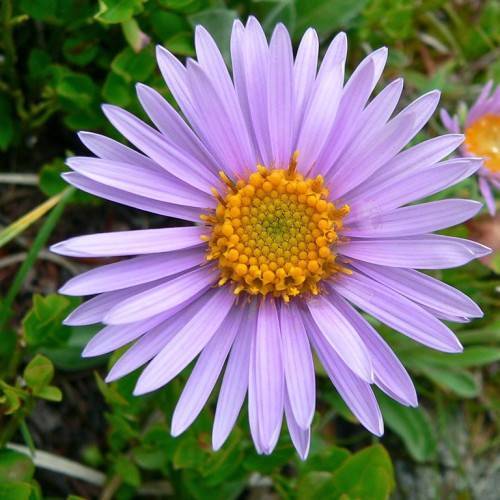
alpine aster
Aster alpinus
Cycle:
Herbaceous Perennial
Watering:
Minimal
Hardiness Zone:
5
Flowers:
Flowers In Summer
Sun:
Full sun
Fruits:
Fruits In Summer Ready In Fall
Leaf:
Yes
Growth Rate:
Moderate
Drought Tolerant:
Yes
Salt Tolerant:
Yes
Care Level:
Medium
watering
Alpine aster (Aster alpinus) is an excellent choice for a rock or perennial garden. Watering needs for alpine aster depend on the soil type and moisture content. In general, alpine aster does best when the soil remains evenly moist but not soggy. During the growing season, this plant likes 1-2 inches of water per week. Water deeply once a week, or more frequently in areas with prolonged hot or dry weather. When soil is dry to the touch, it's time to water again. As temperatures cool, water less, allowing the soil to slightly dry out before the next watering. In the winter months, alpine aster generally doesn't need any supplemental water.
sunlight
Alpine aster grows best in full sun and is a sun loving flower. It prefers at least 6 hours of direct sunshine each day, as this encourages optimal blooming and growth. Direct sunlight will also help to bring out its beautiful colours. During the summer months, when days are long, plants should receive the full amount of sunlight that they need. During the winter months, when days are shorter, supplementing with artificial light can be beneficial. Additionally, providing shelter from harsh wind can protect the plants and help preserve their delicate blooms.
pruning
Alpine aster should be pruned in early spring, before the plants start to form buds, when the growth has just begun. Prune about 1-third of the old stems down to the ground, making sure to remove any dead or damaged stems. If the plant has become spindly, you can also prune stems down to 1-third their previous length. This will create a bushier form. Aster alpinus does not respond well to heavy late season pruning, so it is best to avoid pruning after late summer.
